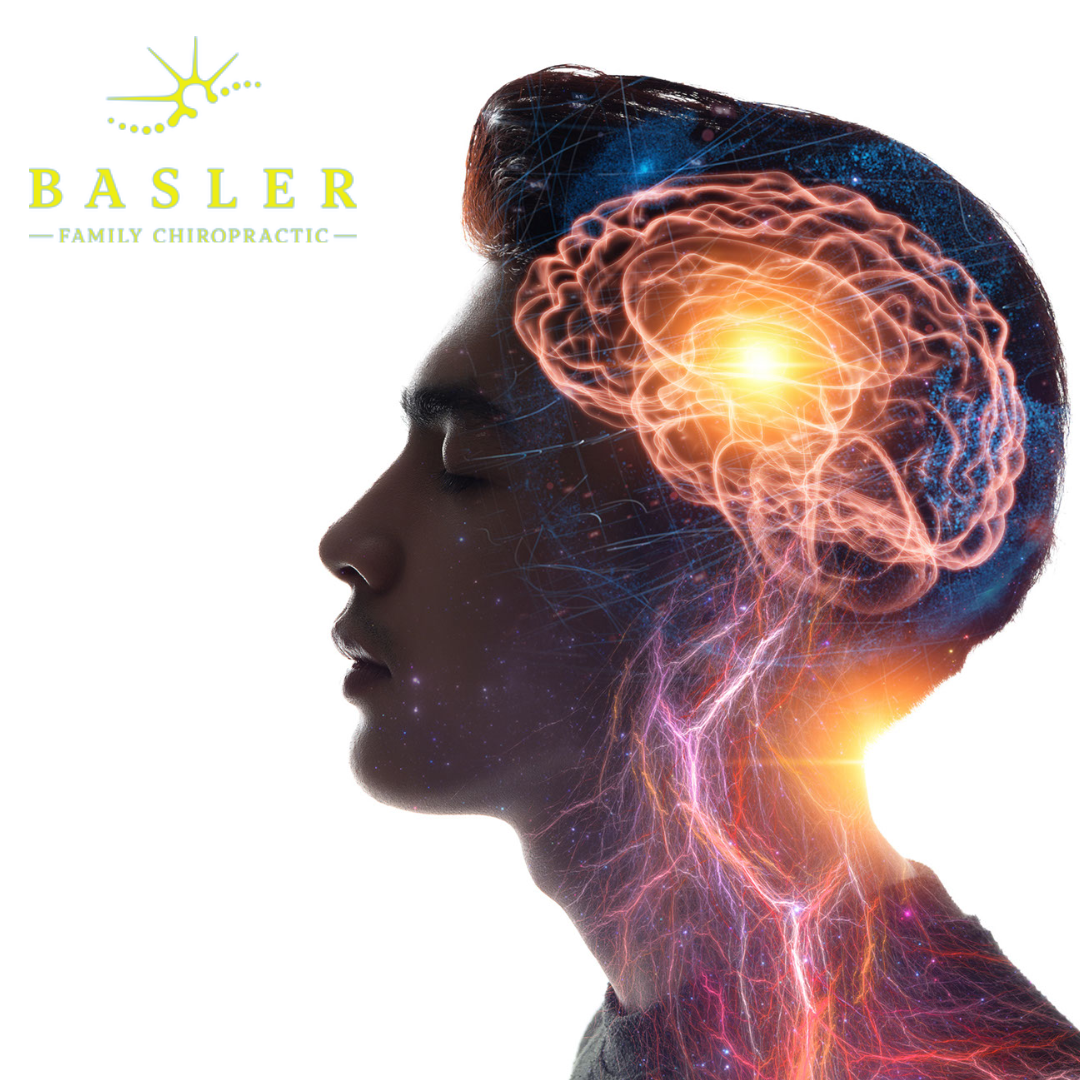
Chiropractic and Strokes
Having a stroke can be devastating! Not just for the person who has the stroke, but also for their family, friends, and caregivers. They are one of the leading causes of death and disability in the world.1
In fact, about 17 million people around the world suffer from a significant stroke every year! And about 5 million of them experience long term disability.2
Over the past 20 years, scientists have been showing that chiropractic care can actually change the way your brain works and how it controls your body, including movement and strength.
A stroke is something that causes a problem with the blood supply to the brain. This could be because of a blockage in an artery in the brain or a bleed in the brain itself. We all know how important our brain is, and without blood, it just doesn’t work, which is why strokes can be fatal or result in significant long-term disability.2
One of the most common disabilities after a stroke is muscle weakness, often on one side of the body. This may mean that after a stroke, a person has trouble using their arm or hand, or they may struggle to stand or walk.3 Living with muscle weakness can be really hard and have a big impact on a person’s ability to look after themselves or work.
There are lots of rehabilitative approaches that may help people who have had a stroke from physiotherapy through to robot-assisted therapies.4-6 But doctors and scientists are constantly looking for new approaches to help stroke survivors.3
Over the past 20 years, scientists have been showing that chiropractic care can actually change the way your brain works and how it controls your body, including movement and strength.7-16 A number of recent studies have shown that a single session of chiropractic care can result in an immediate increase in strength.17-20
In one of these studies, the researchers found a 16% increase in strength of leg muscles in a group of students after a session of chiropractic care.17 Another study reported an 8% increase in strength in elite athletes after they were adjusted by a chiropractor,19 and one more study found an 11% increase in jaw strength in a group of healthy people after chiropractic adjustments.18
Chiropractic May Help
But could chiropractic care help someone who has muscle weakness because they’ve had a stroke? A new study says maybe it can!20 In this study that was published in the reputable journal Scientific Reports, researchers looked at changes in strength in weak leg muscles after chiropractic care in people who had suffered from a stroke.20
The team of scientists that did this study measured the strength of weak leg muscles in chronic stroke patients before and after a single session of chiropractic care or a sham control session. They also used electrical stimulations of nerves in their legs, which could help them to work out whether any changes in strength came from their brain or something that was happening in their spinal cord.
When they analyzed the data from their study, the scientists found an average improvement in strength of almost 65% in the affected leg of these stroke patients. They were blown away by this finding because 65% is a huge difference! They also found that these strength changes were due to changes in the way their brain was communicating with these weak muscles, as opposed to changes in their spinal cord.
These results are really exciting, but you do need to remember that the scientists only looked at immediate changes after chiropractic care, so they don’t yet know how long the changes last for. That’s why they’re now doing another study to look at how longer-term chiropractic care impacts how stroke survivors can walk and move.
However, these initial ground-breaking findings are really important and may mean that chiropractic care can help people who have had a stroke to improve their strength and ability to walk and move. So, if someone you know has suffered from a stroke, let them know that chiropractic care may really help to improve their brain/body communication and to get them moving again!
References
- Sherzai AZ, Elkind MS. Advances in stroke prevention. Ann N Y Acad Sci 2015;1338:1-15.
- Clarke DJ, Forster A. Improving post-stroke recovery: the role of the multidisciplinary health care team. J Multidiscip Healthc 2015;8:433-42.
- Chen JC, Shaw FZ. Progress in sensorimotor rehabilitative physical therapy programs for stroke patients. World J Clin Cases 2014;2(8):316-26.
- Veerbeek JM, Langbroek-Amersfoort AC, van Wegen EE, et al. Effects of Robot-Assisted Therapy for the Upper Limb After Stroke. Neurorehabilitation and neural repair 2017;31(2):107-21.
- Greisberger A, Aviv H, Garbade SF, et al. Clinical relevance of the effects of reach-to-grasp training using trunk restraint in individuals with hemiparesis poststroke: A systematic review. J Rehabil Med 2016;48(5):405-16.
- Wist S, Clivaz J, Sattelmayer M. Muscle strengthening for hemiparesis after stroke: A meta-analysis. Annals of physical and rehabilitation medicine 2016;59(2):114-24.
- Haavik H, Murphy B. Subclinical neck pain and the effects of cervical manipulation on elbow joint position sense. Journal of Manipulative & Physiological Therapeutics 2011;34:88-97.
- Haavik H, Murphy B. The role of spinal manipulation in addressing disordered sensorimotor integration and altered motor control. Journal of Electromyography and Kinesiology 2012;22(5):768-76.
- Haavik Taylor H, Murphy B. Altered cortical integration of dual somatosensory input following the cessation of a 20 minute period of repetitive muscle activity. Exp Brain Res 2007;178(4):488-98.
- Haavik Taylor H, Murphy B. Cervical spine manipulation alters sensorimotor integration: A somatosensory evoked potential study. Clin Neurophysiol 2007;118(2):391-402.
- Haavik Taylor H, Murphy B. Transient modu-lation of intracortical inhibition following spinal manipulation. Chiropractic Journal of Australia 2007;37:106-16.
- Haavik Taylor H, Murphy B. Altered sensorimotor integration with cervical spine manipulation. Journal of Manipulative and Physiological Therapeutics 2008;31(2):115-26.
- Haavik Taylor H, Murphy B. Altered Central Integration of Dual Somatosensory Input Following Cervical Spine Manipulation. Journal of Manipulative & Physiological Therapeutics 2010;33 (3):178-88.
- Haavik Taylor H, Murphy B. The effects of spinal manipulation on central integration of dual somatosensory input observed following motor training: A crossover study. Journal of Manipulative & Physiological Therapeutics 2010;33 (4):261-72.
- Marshall P, Murphy B. The Effect of Sacroiliac Joint Manipulation on Feed-Forward Activation Times of the Deep Abdominal Musculature Journal of Manipulative and Physiological Therapeutics 2006;29(3 ):196-202.
- Niazi I, Türker K, Flavel S, et al. Changes in H-reflex and V waves following spinal manipulation. Exp Brain Res 2015;233:1165-73.
- Niazi IK, Turker KS, Flavel S, et al. Changes in H-reflex and V-waves following spinal manipulation. Exp Brain Res 2015.
- Haavik H, Ozyurt MG, Niazi IK, et al. Chiropractic Manipulation Increases Maximal Bite Force in Healthy Individuals. Brain sciences 2018;8(5).
- Christiansen TL, Niazi IK, Holt K, et al. The effects of a single session of spinal manipulation on strength and cortical drive in athletes. Eur J Appl Physiol 2018;118(4):737-49.
- Holt K, Niazi IK, Nedergaard RW, et al. The effects of a single session of chiropractic care on strength, cortical drive, and spinal excitability in stroke patients. Scientific Reports 2019;9(1):2673.
Acknowledgments
- Dr. Heidi Haavik – BSc(Physiol) BSc(Chiro) PhD
- Dr. Kelly Holt – BSc, BSc(Chiro), PGDipHSc, PhD
- Dr. Jenna Duehr – BChiro, BHSC (Nursing), MHSc

